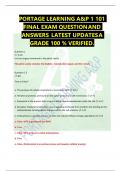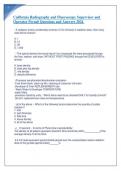Exam (elaborations)
DeWit's Fundamental Concepts and Skills for Nursing, 5th Edition By Patricia A. Williams -Test Bank
- Module
- Nursing Test Bank
- Institution
- Nursing Test Bank
Chapter 03: Legal and Ethical Aspects of Nursing Williams: deWit's Fundamental Concepts and Skills for Nursing, 5th Edition MULTIPLE CHOICE 1. A student nurse who is not yet licensed: a. may not perform nursing actions until he or she has passed the licensing examination. b. is not respon...
[Show more]












